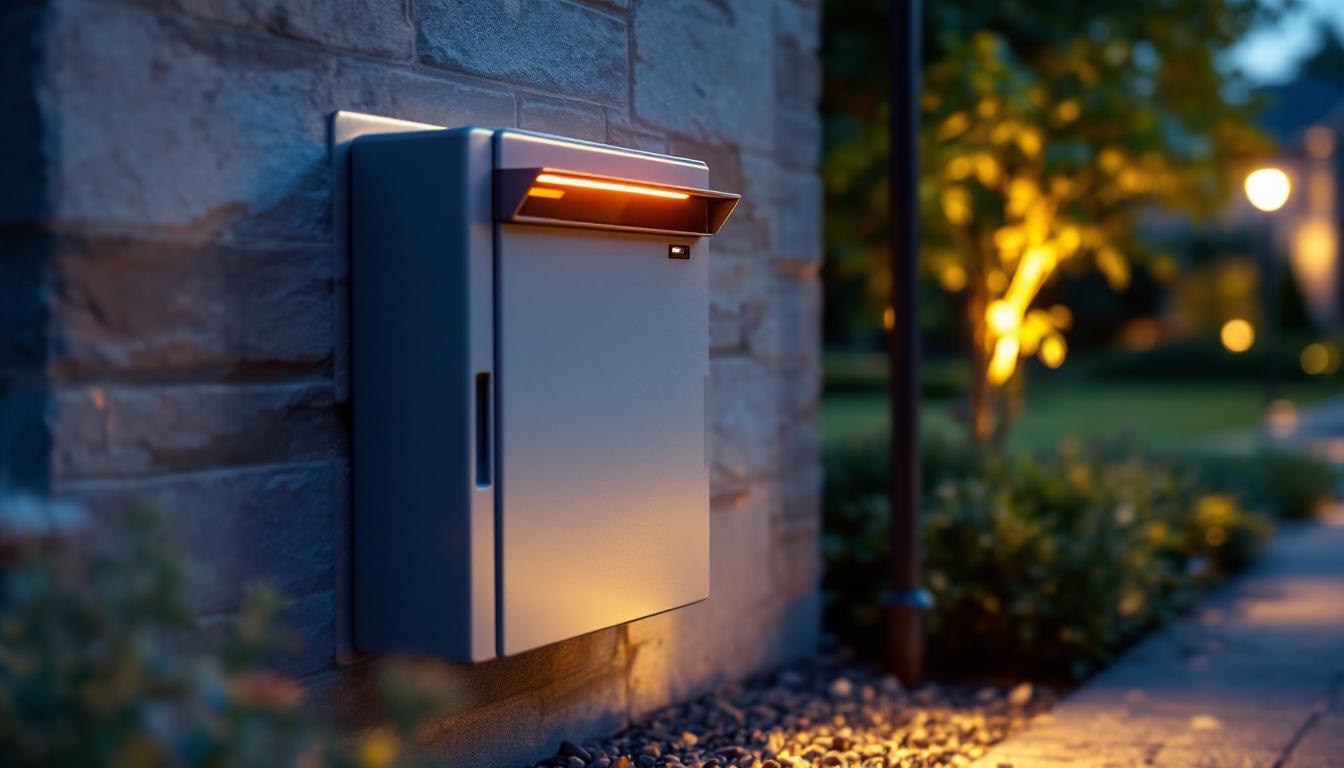
In the ever-evolving landscape of outdoor lighting, solar post lights have gained significant traction among lighting contractors. As energy efficiency and sustainability become paramount, understanding the advantages and disadvantages of solar post lights compared to traditional alternatives is essential for making informed decisions. This article delves into the nuances of solar post lights and their alternatives, providing valuable insights for lighting contractors seeking the best solutions for their projects.
Solar post lights are outdoor lighting fixtures powered by solar energy. They typically feature solar panels that collect sunlight during the day, converting it into electricity to power the lights at night. This technology has made solar post lights increasingly popular in residential and commercial settings. With advancements in solar technology, these lights now come in various styles and designs, allowing homeowners and businesses to choose options that complement their outdoor aesthetics while providing functional illumination.
One of the primary benefits of solar post lights is their energy efficiency. By harnessing solar energy, these lights reduce electricity costs and minimize environmental impact. Additionally, they are easy to install, often requiring no wiring or electrical work, which can save time and labor costs for contractors. Many models also come equipped with motion sensors or timers, allowing for enhanced energy savings by ensuring that lights are only activated when needed, further optimizing their efficiency.
Another significant advantage is their low maintenance requirements. Solar post lights typically have long-lasting LED bulbs and rechargeable batteries, which can last for years with minimal upkeep. This longevity makes them an attractive option for contractors looking to provide reliable lighting solutions. Moreover, the absence of electrical wiring means there are fewer components that can fail, reducing the likelihood of costly repairs or replacements over time. The variety of designs available also allows for creative installations, from garden pathways to illuminating driveways, enhancing the overall safety and aesthetic appeal of outdoor spaces.
Despite their advantages, solar post lights come with certain limitations. Their performance can be heavily influenced by weather conditions, particularly in areas with limited sunlight. In regions with prolonged cloudy days or heavy snowfall, the efficiency of solar post lights may diminish, leading to inconsistent lighting. This variability can be a concern for contractors working in climates with unpredictable weather, as it may necessitate the installation of additional lighting solutions to ensure adequate illumination during darker months.
Furthermore, the initial cost of high-quality solar post lights can be higher than traditional options. While they save money on electricity in the long run, the upfront investment might deter some contractors from choosing them for specific projects. Additionally, the aesthetic quality and brightness of solar post lights can vary significantly between models, making it essential for contractors to conduct thorough research and select products that meet both budgetary and performance standards. As technology continues to advance, however, we can expect improvements in battery efficiency and solar panel effectiveness, potentially addressing some of these limitations in the near future.
While solar post lights offer numerous benefits, traditional lighting alternatives remain prevalent in the market. Understanding these options can help contractors determine the best fit for their specific needs.
Wired electric post lights are a common choice for outdoor lighting. These fixtures are connected to the electrical grid and typically provide consistent and powerful illumination. Their reliability makes them suitable for areas requiring bright lighting, such as parking lots or commercial properties.
However, the installation of wired electric lights can be labor-intensive and costly, particularly in terms of trenching and wiring. Additionally, they require ongoing electricity costs, which can add up over time. For contractors, this means weighing the benefits of consistent performance against the potential for higher installation and operational costs.
Low-voltage lighting systems offer a middle ground between solar and wired electric options. These systems operate on a lower voltage, making them safer and easier to install than traditional wired systems. They can be powered by a transformer connected to the electrical grid, providing flexibility in design and installation.
Low-voltage systems are often used in landscape lighting, as they can create a warm ambiance while being energy-efficient. However, they still incur electricity costs, and the installation process, while simpler than high-voltage systems, can still be more complex than solar options.
When deciding between solar post lights and traditional lighting alternatives, several factors come into play. Each option has its strengths and weaknesses, which can influence the final decision based on the specific project requirements.
Cost is often a primary concern for contractors when selecting lighting solutions. Solar post lights may have a higher initial purchase price, but they eliminate ongoing electricity costs, making them cost-effective over time. In contrast, wired electric and low-voltage systems typically have lower upfront costs but come with recurring electricity expenses.
Contractors should consider the long-term financial implications of each option. For projects with tight budgets, solar post lights may offer a more sustainable financial model, while larger projects with ample funding might benefit from the immediate brightness and reliability of wired systems.
The installation process can significantly impact project timelines and labor costs. Solar post lights are generally easier to install, as they require no wiring or electrical connections. This can be particularly advantageous for contractors working on tight schedules or in locations with challenging terrain.
On the other hand, wired electric and low-voltage systems necessitate more complex installation procedures. Contractors must factor in the time and labor required for trenching and wiring, which can extend project timelines and increase labor costs.
Performance is another critical aspect to consider. Solar post lights rely on sunlight for energy, meaning their effectiveness can fluctuate based on weather conditions. In contrast, wired electric lights provide consistent brightness regardless of external factors, making them ideal for high-traffic areas or locations requiring dependable lighting.
Low-voltage systems offer a balance of performance and energy efficiency, but they still depend on an electrical source. Contractors must assess the specific lighting needs of each project to determine which option will deliver the desired results.
As sustainability becomes increasingly important in the construction and lighting industries, the environmental impact of lighting choices cannot be overlooked. Solar post lights stand out in this regard, as they utilize renewable energy and reduce carbon footprints.
The use of solar energy is a significant advantage of solar post lights. By harnessing sunlight, these fixtures contribute to a reduction in greenhouse gas emissions and reliance on fossil fuels. For contractors aiming to promote sustainable practices, solar post lights can be an excellent selling point to environmentally conscious clients.
Additionally, many solar post lights are designed with recyclable materials, further enhancing their eco-friendly profile. This aligns with the growing demand for sustainable products in the market, allowing contractors to meet client expectations while contributing to environmental conservation.
While traditional wired and low-voltage systems provide reliable lighting, they often rely on non-renewable energy sources, contributing to carbon emissions. Contractors should consider the long-term environmental impact of their lighting choices, as clients increasingly seek sustainable solutions.
Moreover, the production and disposal of traditional lighting fixtures can also have negative environmental consequences. By opting for solar post lights, contractors can help mitigate these effects and promote a greener approach to outdoor lighting.
Understanding client preferences is crucial for lighting contractors. As awareness of sustainability and energy efficiency grows, many clients are leaning towards solar solutions. This shift in consumer behavior is influencing market trends and shaping the future of outdoor lighting.
Contractors play a vital role in educating clients about the various lighting options available. By presenting the benefits and limitations of solar post lights alongside traditional alternatives, contractors can empower clients to make informed decisions that align with their values and needs.
Providing clear comparisons, such as cost analysis, installation processes, and environmental impact, can help clients understand the long-term benefits of choosing solar post lights. This educational approach not only builds trust but also positions contractors as knowledgeable professionals in the field.
As the demand for sustainable lighting solutions continues to rise, contractors must stay ahead of market trends. This includes keeping abreast of advancements in solar technology, new product offerings, and changing client preferences. By adapting to these trends, contractors can ensure they remain competitive and relevant in the industry.
Investing in training and resources related to solar lighting can also enhance a contractor’s expertise, enabling them to provide clients with the best possible solutions for their outdoor lighting needs.
In the debate between solar post lights and traditional lighting alternatives, there is no one-size-fits-all solution. Each option presents unique advantages and challenges that contractors must carefully consider based on project requirements, client preferences, and environmental impact.
Solar post lights offer energy efficiency, low maintenance, and sustainability, making them an appealing choice for many applications. However, traditional wired and low-voltage systems provide reliability and consistent performance in high-demand areas.
Ultimately, the decision should be guided by a thorough understanding of the specific needs of each project and client. By weighing the pros and cons of solar post lights against traditional alternatives, lighting contractors can make informed choices that enhance their service offerings and contribute to a more sustainable future.
Ready to make the right choice for your next lighting project? At LumenWholesale, we provide lighting contractors with the highest quality solar post lights and traditional lighting alternatives. Our spec-grade products ensure you don’t just meet but exceed your project’s lighting requirements. With unbeatable wholesale prices and the convenience of bulk buying, you can trust LumenWholesale to light up your projects without breaking the bank. Say goodbye to inflated markups and hello to free shipping, premium quality, and the best value in lighting. Wholesale Lighting at the Best Value is just a click away. Choose LumenWholesale for a brighter, more sustainable future in outdoor lighting.

Discover how a mounting bracket for light can revolutionize your lighting installation projects.

Discover the key challenges lighting contractors face when installing electric timers for lights.

Discover the surprising details that lighting contractors often miss when working with 120V 60W light bulbs.

Discover the essentials of cable box covers for outdoor installations in this comprehensive guide tailored for lighting contractors.